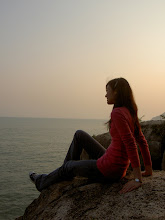 The last leg of the China journey brings me to Nanjing. One of the 4 ancient capitals of China, it literally means "Southern Capital" (Beijing is the northern capital, the other 2 were Luoyan and Chang'an now known as Xi'an). Aside from being the capital for six dynasties, it is also the second largest economic centre in South Eastern China next to Shanghai. I didn't spend much time in this city either, but there were some highlights.
The last leg of the China journey brings me to Nanjing. One of the 4 ancient capitals of China, it literally means "Southern Capital" (Beijing is the northern capital, the other 2 were Luoyan and Chang'an now known as Xi'an). Aside from being the capital for six dynasties, it is also the second largest economic centre in South Eastern China next to Shanghai. I didn't spend much time in this city either, but there were some highlights.
Pictured to the left is the Yangtze River Bridge, the first bridge to link North and South Eastern China. It was a significant time in history during the construction of this bridge as it was the first to be was designed and built by the Chinese without any outside help (by that I mean, other countries esp. the Soviet Union). The double deckered bridge took about 8 years to build and crosses the Yangtze River.
Another highlight of Nanjing (which I could not get a picture of b/c cameras were not allowed in) is the Nanjing Massacre Memorial Hall, commemorating the 300,000 victims killed in the Nanjing Massacre on December 13, 1937 by the Imperial Japanese Army. The Memorial Hall is built near "pit of ten thousand corpses", where thousands of bodies were buried. On the way in to the hall, you will walk across an empty courtyard surrounded by a million grey pebbles representing the thousands of corpses as if you were walking across a thousand bodies. Inside there are even skeletal remains. Puts one in a solemn mood. Our tour guide told us that Japanese tourists do not dare to come to Nanjing for they fear of getting beat up by the Chinese. That is slightly frightening to hear.
The rest of the highlights are captured below:









1.2.3. A look at Nanjing's buildings. They appear to look older than the newly developed parts of the other cities in South East |China (Hangzhou, Suzhou and Wuxi) 4.5.6. Inside the Confucian Temple (Fu Zi Miao), a shopping district like the one in Shanghai. 7. The Qinhuai River, renamed so because Emperor Qin Shuihuang because he wanted to excavate a mountain so that the water could be introduced to the city. It is actually part of the Yangtze River and runs around Nanjing. 8.This man is a famous artist who can paint the inside of a glass ball.. 9. ..to look like this. If you buy his work, proceeds apparently go to charity.
